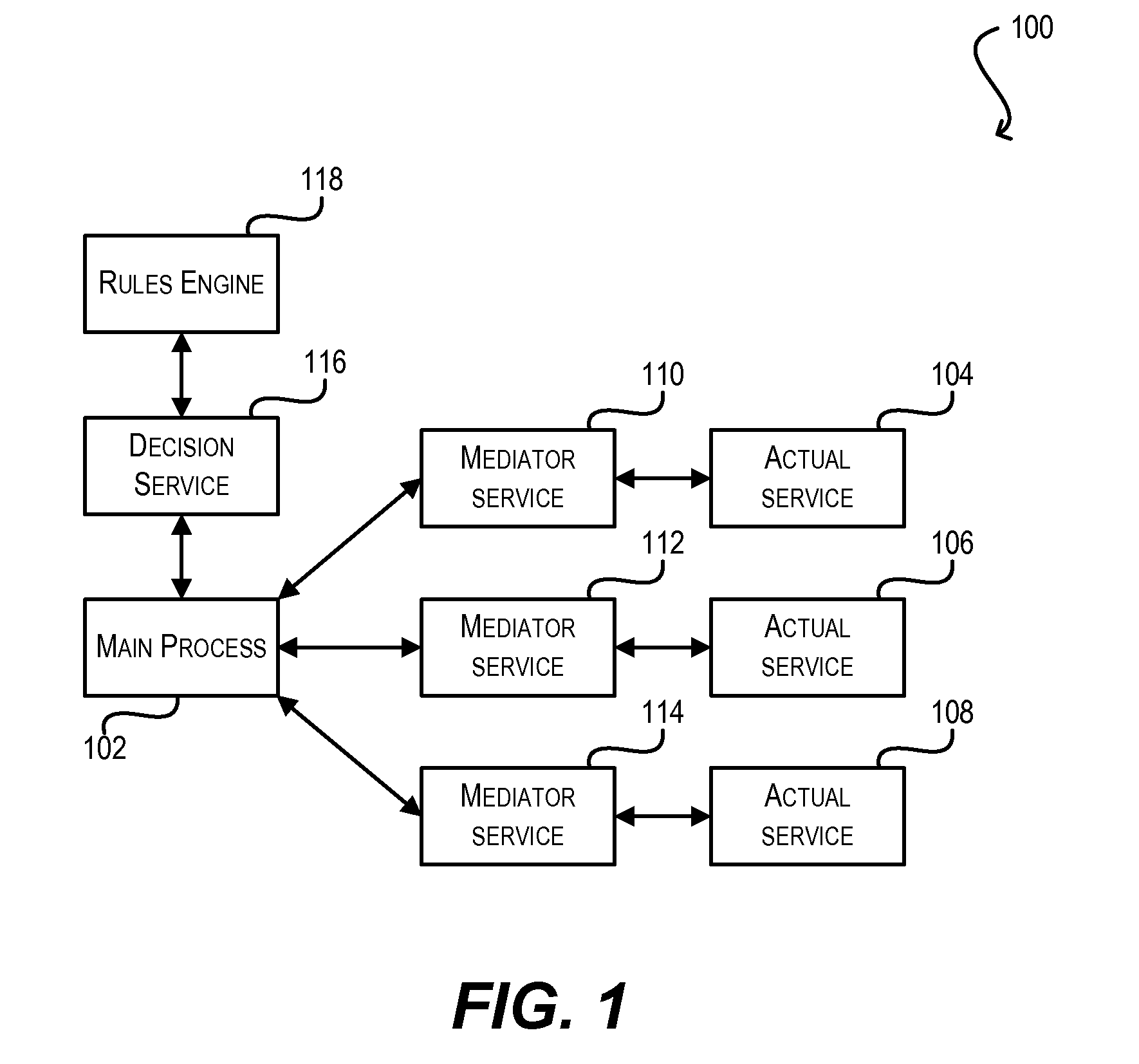Dynamic service invocation and service adaptation in bpel soa process
a service invocation and dynamic technology, applied in the field of serviceoriented computing, can solve the problems of link to services, general static, and the growing unwieldiness of the bpel process, and achieve the effect of minimalism
- Summary
- Abstract
- Description
- Claims
- Application Information
AI Technical Summary
Benefits of technology
Problems solved by technology
Method used
Image
Examples
Embodiment Construction
[0029]In the following description, for the purposes of explanation, numerous specific details are set forth in order to provide an understanding of the present invention. It will be apparent, however, to one skilled in the art that the present invention may be practiced without some of these specific details.
[0030]Embodiments of the present invention provide a framework for dynamic service invocation and dynamic service adaptation in the context of a service-oriented application (e.g., a BPEL process). In particular, this framework includes (1) a data-driven mechanism for determining an appropriate service to invoke at runtime of the application, (2) a means for dynamically invoking an operation exposed by the service, where the invocation call is dynamically transformed (i.e., adapted) to match the message schema supported by the service.
[0031]In a conventional BPEL process, a limited form of dynamic service invocation can be achieved by using dynamic binding to change the service...
PUM
 Login to View More
Login to View More Abstract
Description
Claims
Application Information
 Login to View More
Login to View More - R&D
- Intellectual Property
- Life Sciences
- Materials
- Tech Scout
- Unparalleled Data Quality
- Higher Quality Content
- 60% Fewer Hallucinations
Browse by: Latest US Patents, China's latest patents, Technical Efficacy Thesaurus, Application Domain, Technology Topic, Popular Technical Reports.
© 2025 PatSnap. All rights reserved.Legal|Privacy policy|Modern Slavery Act Transparency Statement|Sitemap|About US| Contact US: help@patsnap.com



